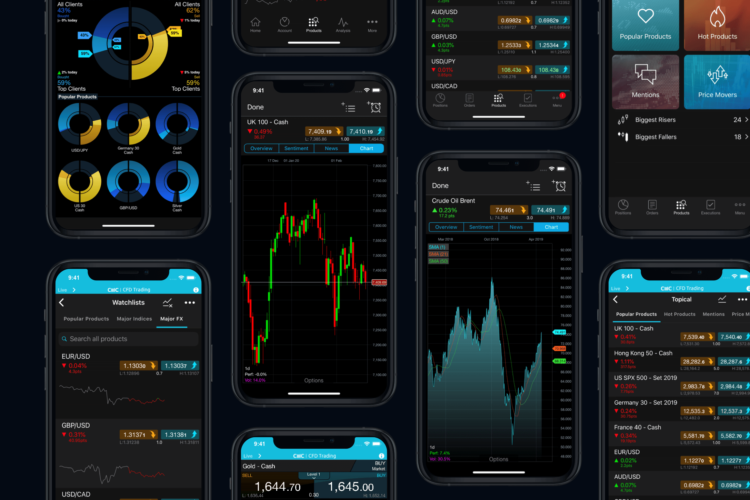Welcome to the fast-paced world of CFD (contract for difference) trading. If you are new to this exciting form of trading or have dabbled in it before, then you know that success in this market requires a thorough understanding and implementation of effective strategies. But with constantly changing market conditions and various factors influencing prices, developing a winning strategy can seem daunting.
This article will explore how CFD trading can help you develop a winning strategy by providing flexibility, risk management tools, and access to diverse assets. By the end, you will have the knowledge and resources necessary to succeed in your CFD trades.
What is CFD Trading and How Does It Work?
CFD trading, also known as Contract for Difference trading, is a widely popular financial instrument that allows investors to speculate on the price movements of various financial assets, such as currencies, stocks, commodities, and indices, without owning the underlying asset. CFD trading enables traders to make profits by capitalising on price fluctuations of an asset, whether it’s going up or down.
The fundamental concept of CFD trading is based on the difference between a financial asset’s opening and closing price. In this way, CFD trading offers an opportunity for traders to make gains on short-term market movements. However, CFD trading involves significant risk as there is a possibility of losing money. Therefore, it is essential to understand the concept properly before getting involved in this form of trading.
Why Developing a Strategy is Important for Success
As with any form of trading, having a well-defined strategy is crucial for success in CFD trading. A strategy is a roadmap that guides traders through the market’s ups and downs, helping them make informed decisions and stay ahead in their trades. Traders may make impulsive and emotional decisions without a strategy, leading to losses.
Moreover, a winning strategy is essential because the CFD market is highly volatile, and prices change rapidly. A good strategy considers risk management techniques, market trends, and entry/exit points to help traders stay disciplined and minimise potential losses.
Technical Analysis for Strategy Development
One of the critical components in developing a winning CFD trading strategy is technical analysis. It involves studying historical price data and market trends to predict future price movements. Technical analysis uses tools such as charts, indicators, and oscillators to identify patterns and trends that indicate potential entry or exit points for trades.
Some popular technical analysis strategies used in CFD trading include moving averages, Bollinger bands, and relative strength index (RSI). Traders can also create their custom indicators based on their strategies and preferences.
Fundamental Analysis Role in Strategies
While technical analysis focuses on price movements and market trends, fundamental analysis considers the underlying factors influencing an asset’s value. It involves studying economic indicators, financial news, and corporate developments to make informed trading decisions.
Depending on the market you want to trade in, you should learn about the particular trends and market driving forces for price fluctuations.
For instance, if a company releases positive earnings results, it could increase its stock price. Or if you are interested in the commodities market and are trading commodity CFDs, you should learn what drives gas price or the price of metals and agricultural goods. By combining fundamental and technical analysis, traders can get a more comprehensive view of the market and make better-informed trading decisions.
Money and Risk Management Techniques
In addition to having a sound strategy, it is crucial to implement proper money and risk management techniques in CFD trading. These techniques help traders limit their losses and preserve capital, ensuring long-term success in the market.
Some standard risk management techniques include setting stop-loss orders, using leverage wisely, and diversifying one’s portfolio. Traders should also determine their risk tolerance level and stick to it while making trading decisions.
Backtesting and Refining Strategies
In the world of CFD trading, there is no one-size-fits-all strategy that guarantees success. Each trader’s approach may vary based on individual preferences, risk tolerance, and market analysis. What works for one trader may not necessarily work for another due to the ever-changing dynamics of the financial markets.
Therefore, it is crucial for traders to continually backtest and refine their strategies based on market conditions and personal experience. Backtesting involves testing a strategy using historical data to determine its effectiveness. By analysing past performance, traders can identify weaknesses in their strategy and make necessary adjustments to improve their future results.
Psychological Discipline for Staying Focused
Lastly, developing a winning strategy in CFD trading also requires psychological discipline. With the constantly changing market conditions and potential for losses, it is easy for traders to let emotions like fear and greed take over. It can result in impulsive decisions that may go against their strategies.
Therefore, it is essential for traders to stay disciplined and focused on their strategy while keeping their emotions in check. It can significantly improve their chances of success in the highly dynamic world of CFD trading.

